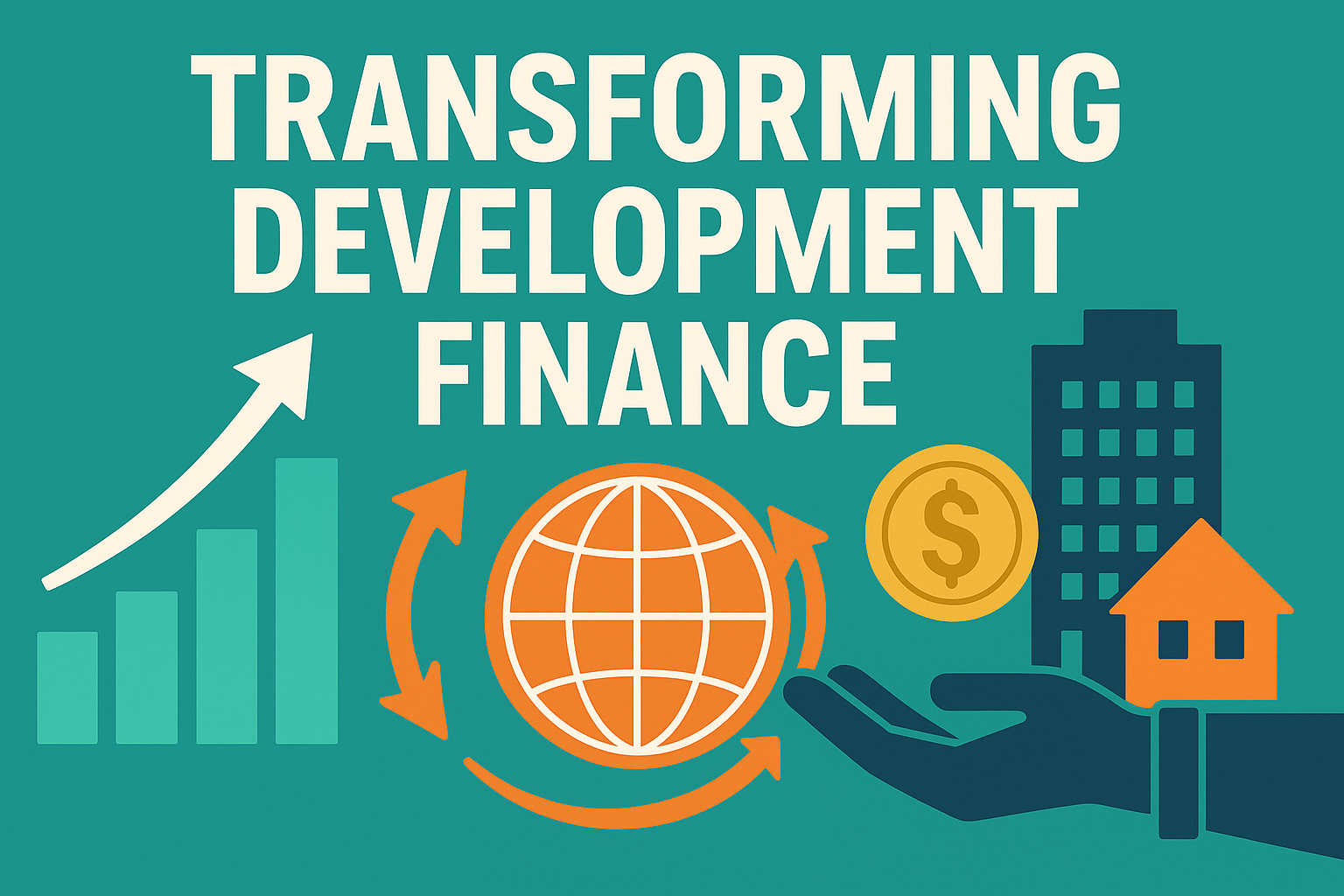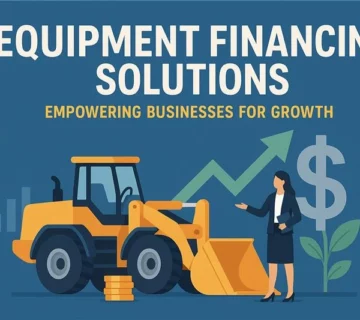Transforming Development Finance: From Aid Dependency to Sustainable Growth in Africa

The landscape of international development finance is undergoing a fundamental transformation. As traditional aid flows diminish and global economic challenges intensify, developing nations across Africa are being compelled to reimagine their approach to financing development priorities. This shift represents not just a change in funding mechanisms, but a complete paradigm transformation toward self-reliance and sustainable economic growth.
The Changing Global Financial Architecture
The traditional model of development assistance is facing unprecedented challenges. Official Development Assistance, once considered the backbone of support for emerging economies, has experienced significant decline both in absolute terms and as a percentage of national budgets worldwide. This reduction comes at a time when developing nations are grappling with mounting debt burdens, currency instabilities, and limited access to affordable financing options.
The implications of this shift extend far beyond mere statistics. Behind every financial figure lies a human story—communities waiting for essential infrastructure, farmers seeking climate-resilient agricultural methods, young graduates pursuing employment opportunities, and families hoping for improved healthcare and education services. These realities underscore the urgency of developing alternative financing strategies that can address genuine development needs.
Africa’s Hidden Financial Potential
Contrary to common perceptions, Africa possesses substantial financial resources that remain largely untapped for development purposes. The continent’s domestic capital stock is estimated at approximately $4.1 trillion, with pension assets reaching $455 billion and insurance pools totaling $320 billion. Additionally, public development banks hold $250 billion, sovereign wealth funds contain $150 billion, and commercial banking assets amount to $2.5 trillion.
These figures reveal a startling reality: Africa’s development challenges are not primarily due to lack of resources, but rather the inefficient utilization and mobilization of existing financial assets. The key lies in developing mechanisms to channel these resources toward productive development investments.
Critical Areas for Financial Reform
Combating Illicit Financial Flows
One of the most pressing challenges facing African development finance is the hemorrhaging of resources through illicit financial flows. An estimated $89 billion annually leaves the continent through various illegal channels, representing a massive drain on resources that could otherwise fund critical development projects. Addressing this issue requires strengthened regulatory frameworks, enhanced international cooperation, and robust anti-corruption measures.
Unlocking Pension Fund Potential
African pension funds represent a significant untapped resource for development financing. Through carefully designed credit guarantees and regulatory reforms, these funds could be channeled toward long-term infrastructure projects while maintaining the security and returns that pension beneficiaries require. This approach has shown promising results in countries that have implemented appropriate regulatory frameworks.
Strengthening Development Banks
National and regional development banks play a crucial role in bridging the gap between available capital and development needs. Strengthening these institutions and reorienting sovereign wealth funds toward national development priorities can create powerful engines for sustainable growth. This requires both institutional capacity building and strategic policy alignment.
Innovative Financing Mechanisms
Climate-Resilient Bonds and Blended Finance
The integration of climate considerations into development finance has opened new avenues for resource mobilization. Climate-resilient bonds and blended finance arrangements can attract private sector investments while addressing environmental sustainability concerns. These instruments align financial returns with environmental and social impact, creating win-win scenarios for investors and communities.
Digital Infrastructure and Micro-Capital
The digital revolution presents unprecedented opportunities for financial inclusion and capital aggregation. Digital infrastructure can formalize savings patterns and aggregate micro-capital from previously excluded populations. This approach democratizes access to financial services while creating new pools of investment capital for development projects.
Domestic Resource Mobilization Strategies
Fiscal Policy Reform
Strengthening domestic resource mobilization requires comprehensive fiscal policy reforms. This includes broadening tax bases, improving collection mechanisms, and implementing progressive taxation systems that ensure equitable contribution to development financing. Additionally, reducing rent-seeking behavior and enhancing fiscal governance ensures that tax revenues are effectively utilized for development purposes.
Private Sector Engagement
Creating enabling environments for private sector investments is crucial for sustainable development financing. This involves regulatory reforms, risk mitigation mechanisms, and the establishment of supportive frameworks for public-private partnerships. Improving ease of doing business, protecting property rights, and reducing bureaucratic obstacles are essential for attracting both domestic and foreign private investments.
The Human-Centered Approach
Development finance must ultimately serve human needs and aspirations. This requires prioritizing investments in human capital development, including education, healthcare, and skills training. Such investments create resilient workforces capable of supporting structural economic transformation and sustainable development.
Social protection systems also play a vital role in this human-centered approach. National social registry systems can enable governments to better identify, coordinate, and deliver social services to those who need them most, ensuring more efficient and equitable resource allocation.
Regional Integration and Cooperation
The African Continental Free Trade Area represents a significant opportunity for enhancing development finance through regional integration. By promoting intra-African trade and cooperation, countries can leverage collective resources and create larger markets for development investments. This regional approach can also facilitate knowledge sharing and best practice dissemination.
Technology and Innovation
Science, technology, and innovation serve as critical drivers of development finance transformation. Digital platforms can enhance financial inclusion, improve service delivery, and create new economic opportunities. Investing in technological infrastructure and innovation ecosystems can generate multiplier effects that enhance the overall impact of development investments.
Sustainable Development Framework
Central to effective development finance is the adoption of integrated national financing frameworks that provide cohesive and strategic approaches to resource mobilization and utilization. These frameworks enable countries to identify financial needs, optimize existing resources, and explore innovative financing solutions by bringing together public, private, domestic, and international funds.
Environmental sustainability considerations must be integrated into all development finance strategies. This includes promoting renewable energy investments, supporting climate-resilient agriculture, and ensuring that development projects contribute to long-term environmental sustainability.
Moving Forward: A New Development Paradigm
The transition from traditional aid dependency to sustainable development financing represents more than a technical adjustment—it embodies a fundamental shift toward self-reliance and empowerment. This transformation requires bold leadership, innovative thinking, and sustained commitment to reform.
Success in this endeavor depends on several key factors: political will to implement necessary reforms, institutional capacity to manage complex financing arrangements, and social consensus around development priorities. Additionally, international cooperation remains important, but in new forms that emphasize partnership rather than dependency.
The path forward involves embracing trade over aid, seeking opportunities over dependency, and prioritizing investment over assistance. This shift requires developing countries to take greater ownership of their development trajectories while working collaboratively with international partners to create supportive global frameworks.
Frequently Asked Questions
Q: What is the main difference between traditional aid and the new development finance approach? A: Traditional aid typically involves direct transfers or concessional loans from developed to developing countries. The new approach emphasizes mobilizing domestic resources, leveraging innovative financial instruments, and creating sustainable financing mechanisms that reduce dependency on external aid.
Q: How can African countries access their domestic financial resources more effectively? A: African countries can improve access by strengthening fiscal governance, combating illicit financial flows, reforming pension fund regulations, enhancing development bank capacity, and creating enabling environments for private sector investment.
Q: What role does technology play in modern development finance? A: Technology enables financial inclusion through digital platforms, facilitates micro-capital aggregation, improves service delivery efficiency, and creates new economic opportunities. It also enhances transparency and accountability in financial management.
Q: How can climate considerations be integrated into development finance? A: Climate integration occurs through climate-resilient bonds, blended finance arrangements focused on environmental sustainability, renewable energy investments, and ensuring that all development projects consider long-term environmental impact.
Q: What are the main challenges in implementing these new financing approaches? A: Key challenges include building institutional capacity, creating appropriate regulatory frameworks, ensuring political commitment to reform, managing transition risks, and maintaining social consensus around development priorities.
Q: How can small and medium enterprises benefit from these new financing mechanisms? A: SMEs can benefit through improved access to credit via strengthened development banks, digital financial services, risk mitigation instruments, and supportive regulatory environments that reduce barriers to business formation and growth.
Q: What is the role of regional cooperation in development finance? A: Regional cooperation facilitates resource pooling, knowledge sharing, market integration, and the development of regional financial institutions. It also enables countries to collectively advocate for better terms in international financial arrangements.
Q: How can countries measure the success of their development finance reforms? A: Success can be measured through indicators such as increased domestic resource mobilization, improved access to finance, enhanced economic diversification, better social outcomes, and reduced dependency on external aid.
How Electronic Corporation of America Can Support Your Development Finance Technology Infrastructure
Since 1972, Electronic Corporation of America has been at the forefront of providing next-generation technology solutions to business and government entities. As development finance undergoes digital transformation, robust and reliable technology infrastructure becomes crucial for implementing sustainable financing mechanisms and ensuring seamless operations.
Our comprehensive technology solutions directly support the digital infrastructure needs essential for modern development finance initiatives. With certified engineers available 24/7 across the country, we ensure that your critical financial systems experience minimal downtime and maximum efficiency.
Our Technology Solutions for Development Finance Include:
- Equipment Financing Solutions: We understand that equipment financing for startups in the development finance sector is crucial for growth. As one of the best equipment financing companies, we provide easy equipment financing options that dispel the myths of equipment financing. Our startup equipment financing and fast equipment financing solutions help organizations acquire essential technology infrastructure without straining their capital resources.
- Professional Server Management: Our professional server support and outsourced server support services ensure optimal performance for development finance platforms. We address common server problems before they impact operations and provide expertise in the virtual private server market to support scalable financial applications.
- Advanced Communication Systems: As a top business VoIP provider, we deliver advanced business VoIP solutions that enable seamless communication across development finance organizations. Our small business VoIP providers services are enhanced with VoIP AI technology to optimize call routing and customer service efficiency.
- Database and Analytics Support: Our expertise in the SQL server transformation market helps organizations modernize their data infrastructure to support complex development finance analytics, from pension fund management systems to climate bond tracking platforms.
- Network Infrastructure Management: We provide optimized network solutions that support digital financial platforms, ensuring secure and reliable connectivity for mobile banking, micro-finance applications, and digital payment systems essential for financial inclusion.
- 24/7 System Monitoring: Our proactive IT management ensures that critical financial systems remain operational around the clock, supporting continuous access to development finance services for communities and organizations.
- Cybersecurity Solutions: We implement robust security measures to protect sensitive financial data and ensure compliance with international standards, crucial for maintaining trust in digital development finance platforms.
- Cloud Infrastructure Support: Our cloud solutions enable scalable and flexible deployment of development finance applications, allowing organizations to expand their reach while maintaining system reliability.
- Disaster Recovery Planning: We provide comprehensive backup and recovery solutions to ensure business continuity for development finance institutions, protecting against data loss and system failures.
- Technology Consultation: Our experienced team helps organizations select and implement the most appropriate technology solutions to support their specific development finance objectives.
Electronic Corporation of America understands that reliable technology infrastructure is the backbone of successful development finance transformation. Our commitment to eliminating network downtimes and maintaining optimized systems ensures that your development finance initiatives can operate smoothly and serve communities effectively.
With over 50 years of experience serving business and government entities, we bring proven expertise in supporting mission-critical operations. Our proactive approach to IT management helps organizations focus on their core development objectives while we handle the complex technology requirements that enable success.
Contact Electronic Corporation of America today to discover how our cutting-edge technology solutions can support your development finance initiatives and help you build the reliable infrastructure needed for sustainable growth and community impact.




No comment